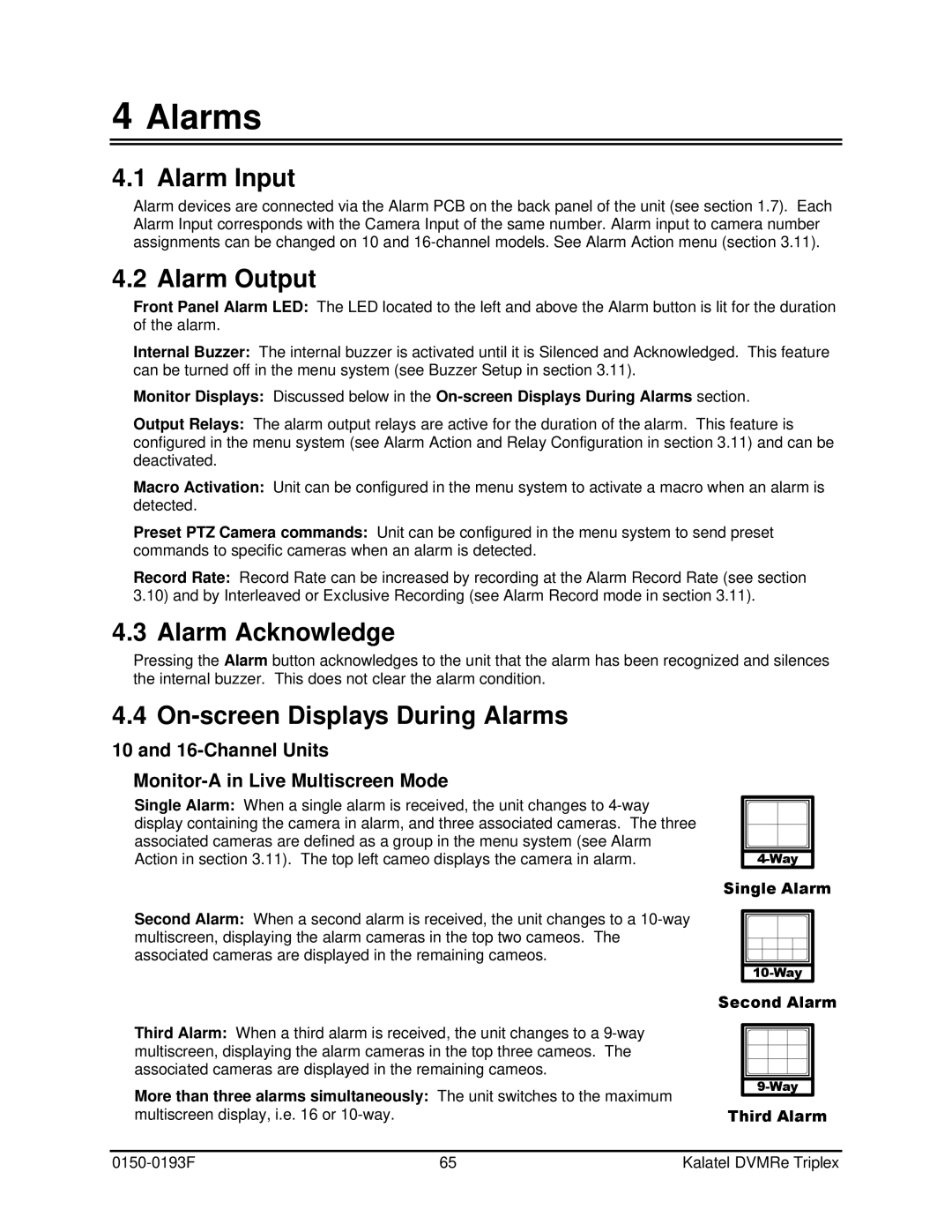
4Alarms
4.1 Alarm Input
Alarm devices are connected via the Alarm PCB on the back panel of the unit (see section 1.7). Each Alarm Input corresponds with the Camera Input of the same number. Alarm input to camera number assignments can be changed on 10 and
4.2 Alarm Output
Front Panel Alarm LED: The LED located to the left and above the Alarm button is lit for the duration of the alarm.
Internal Buzzer: The internal buzzer is activated until it is Silenced and Acknowledged. This feature can be turned off in the menu system (see Buzzer Setup in section 3.11).
Monitor Displays: Discussed below in the
Output Relays: The alarm output relays are active for the duration of the alarm. This feature is configured in the menu system (see Alarm Action and Relay Configuration in section 3.11) and can be deactivated.
Macro Activation: Unit can be configured in the menu system to activate a macro when an alarm is detected.
Preset PTZ Camera commands: Unit can be configured in the menu system to send preset commands to specific cameras when an alarm is detected.
Record Rate: Record Rate can be increased by recording at the Alarm Record Rate (see section 3.10) and by Interleaved or Exclusive Recording (see Alarm Record mode in section 3.11).
4.3 Alarm Acknowledge
Pressing the Alarm button acknowledges to the unit that the alarm has been recognized and silences the internal buzzer. This does not clear the alarm condition.
4.4 On-screen Displays During Alarms
10 and 16-Channel Units
Monitor-A in Live Multiscreen Mode
Single Alarm: When a single alarm is received, the unit changes to
Second Alarm: When a second alarm is received, the unit changes to a
Third Alarm: When a third alarm is received, the unit changes to a
More than three alarms simultaneously: The unit switches to the maximum multiscreen display, i.e. 16 or
Single Alarm
Second Alarm
Third Alarm
65 | Kalatel DVMRe Triplex |
